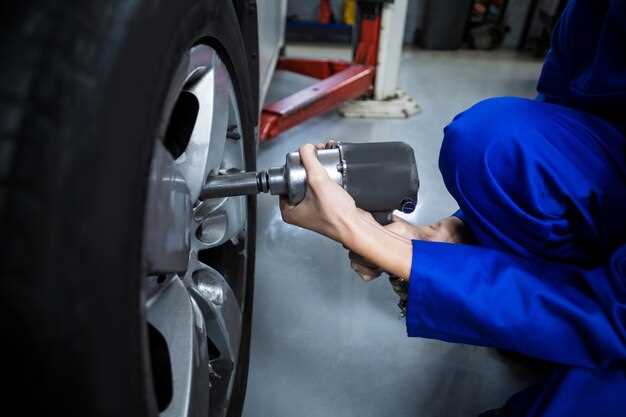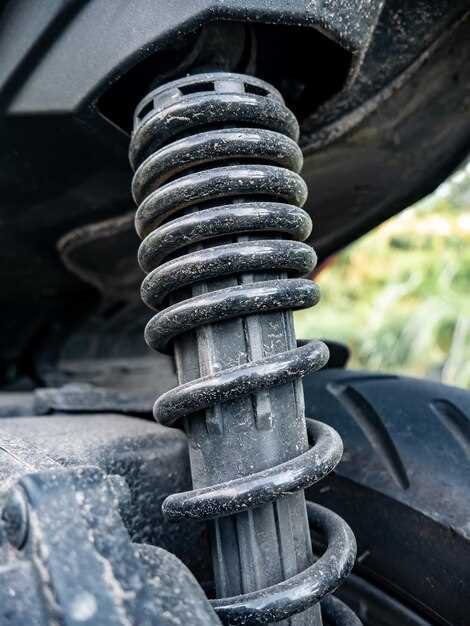
Maintaining optimal performance in your Toyota SUV is crucial for a smooth and safe driving experience. One of the key components that contribute to the overall stability and comfort of your vehicle is the shock absorbers. Over time, these essential parts can become worn, leading to decreased performance and compromised safety. Recognizing the signs of worn shocks is vital for ensuring the longevity of your Toyota and keeping your ride comfortable.
Shock failure not only affects handling but can also increase tire wear, decrease braking efficiency, and ultimately result in costly repairs. For Toyota SUV owners, understanding when and how to replace these components is a fundamental aspect of vehicle maintenance. This article will guide you through the process of identifying worn shocks and provide practical advice on how to effectively repair your suspension system.
Taking proactive measures in replacing worn shocks will not only enhance your vehicle’s performance but also contribute to a safer driving experience. By prioritizing this important maintenance task, you will ensure that your Toyota SUV remains reliable and enjoyable to drive for years to come.
Identifying Signs of Worn Shocks in Toyota SUVs

Worn shock absorbers can significantly impact the performance and safety of your Toyota SUV. Recognizing the signs of failing shocks is crucial for maintaining an optimal driving experience. One of the most noticeable indicators is excessive bouncing. If your vehicle continues to bounce after hitting a bump, it may be time to check the shocks.
Another common sign is a decrease in ride comfort. If you notice that the ride feels rough or uncomfortable, it can suggest that the shock absorbers are no longer effectively dampening road vibrations. Additionally, if you experience difficulty controlling your SUV during turns or braking, this may point to worn shocks affecting stability.
Visual inspections also play a key role in identifying shock wear. Leaking fluid from the shock absorbers indicates they are compromised and need replacement. Furthermore, uneven tire wear can be attributed to faulty shocks, as they fail to keep the tires in consistent contact with the road surface.
Another aspect to consider is noise. If you hear unusual clunking or knocking sounds when driving over bumps, it might signal that the shocks are no longer properly secured or are failing. Addressing these issues promptly can enhance your Toyota SUV’s performance and prolong its lifespan.
Selecting the Right Shock Absorbers for Your Toyota Model
Choosing the right shock absorbers for your Toyota SUV is crucial for optimizing performance, comfort, and safety. Various factors should be considered to ensure you select the most suitable absorbers for your specific model.
First, identify your Toyota model and year. Shock absorbers are designed to match the suspension system of each model, and specifications can vary significantly. Consult your owner’s manual or contact a dealership to understand the recommended shock types for your SUV.
Next, consider the type of driving you typically do. If you mainly drive on smooth highways, factory-standard shock absorbers may suffice. However, if you frequently navigate rough terrains or tow heavy loads, upgrading to high-performance or heavy-duty shocks will enhance stability and handling.
When selecting shock absorbers, look for reputable brands known for quality and durability. Brands like Bilstein, Monroe, and KYB offer a range of options tailored for Toyota vehicles. Reading reviews and seeking recommendations from fellow Toyota owners can also provide valuable insight into the best choices for your specific needs.
Additionally, evaluate whether you want adjustable or non-adjustable shocks. Adjustable shocks allow you to fine-tune the damping characteristics based on your driving conditions, providing greater flexibility and adaptability.
Finally, professional installation is recommended to ensure optimal performance and longevity of your new shock absorbers. Improper installation can lead to premature wear and inadequate performance, negating the benefits of your new components.
By carefully considering these factors, you can select shock absorbers that not only enhance the driving experience of your Toyota SUV but also ensure your vehicle remains safe and reliable on the road.
Step-by-Step Process for Replacing Shocks on Toyota SUVs

The first step in replacing the worn shocks on your Toyota SUV is to gather all necessary tools and materials. You’ll need a jack, jack stands, a socket set, and the new shock absorbers designed for your specific model.
Begin by parking your Toyota SUV on a flat surface and applying the parking brake. Loosen the lug nuts on the wheels before lifting the vehicle. Use the jack to raise the SUV, then place jack stands underneath for safety.
Once the vehicle is secure, remove the wheels to gain access to the shock absorbers. Identify the location of the shocks, which are typically mounted between the frame and the axle.
For each shock, remove the bolts securing it to both the upper and lower mounting points. A socket wrench will help you disconnect these bolts efficiently. If the bolts are rusted or difficult to loosen, applying penetrating oil can facilitate the process.
After removing the old shock absorbers, compare them with the new ones to ensure compatibility. Install the new shock absorbers by positioning them in place and securing them with the bolts you previously removed. Ensure all connections are tight but do not overtighten, as this may damage the parts.
Once all shocks are replaced, reattach the wheels and lower your Toyota SUV back to the ground. Finally, tighten the lug nuts fully and perform a visual inspection of the work done to ensure everything is secure.
After the replacement, take your SUV for a test drive to evaluate performance and handling. If everything feels smooth, you’ve successfully completed the repair of the shock absorbers on your Toyota SUV.
